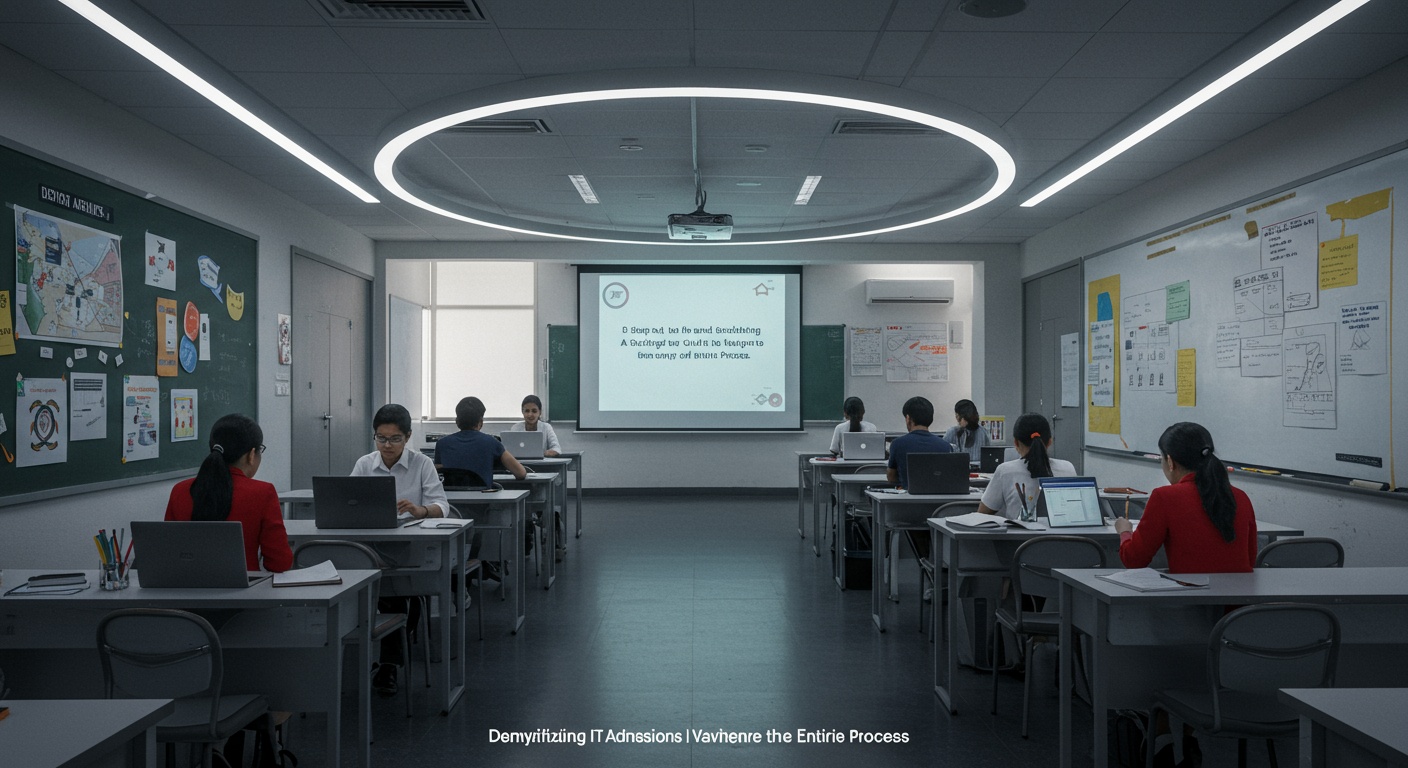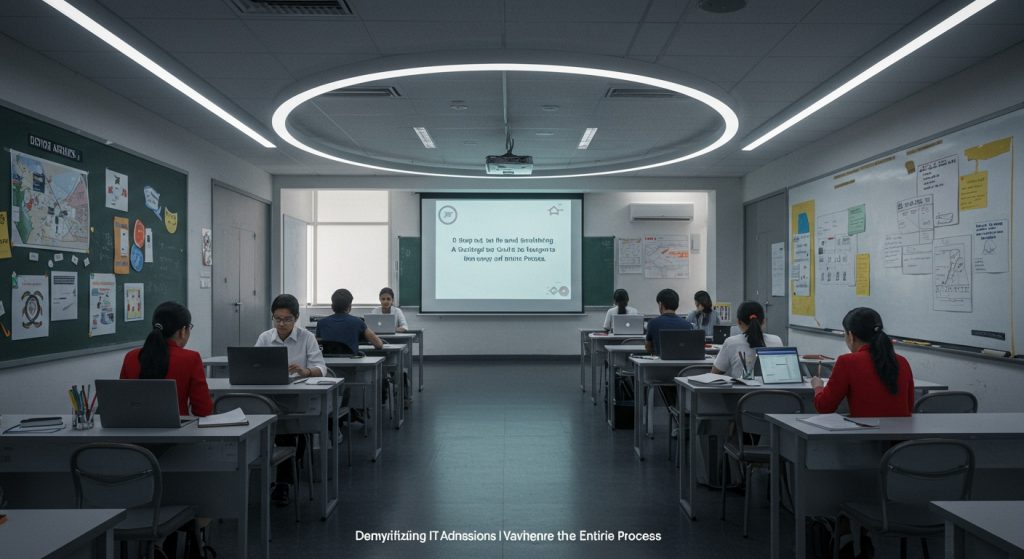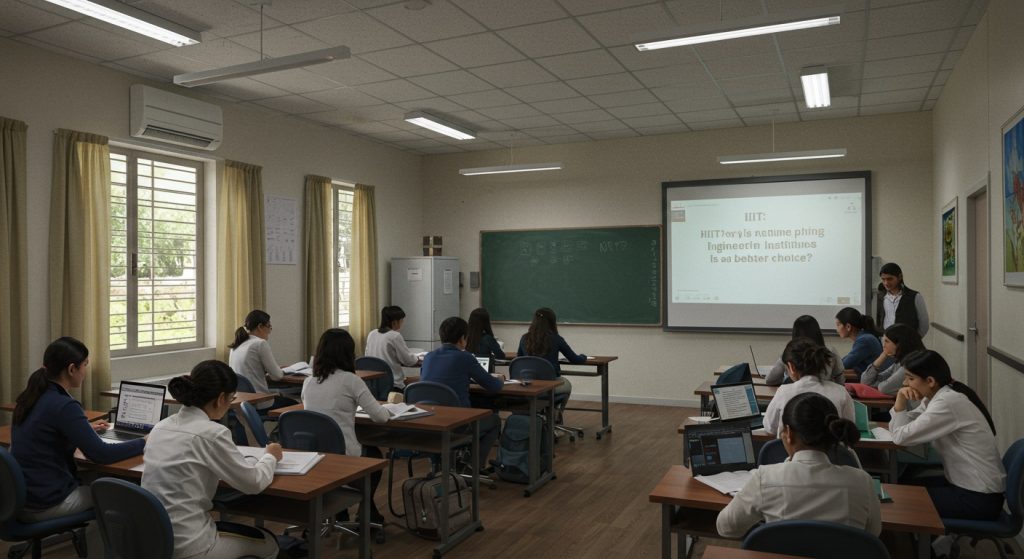Navigating the IIT admission landscape demands more than just acing JEE Advanced; it requires a strategic understanding of the entire ecosystem. With over 1. 2 million aspirants vying for limited seats and evolving cut-offs, the process from registration to JoSAA counselling presents intricate challenges. Recent trends show a surge in demand for specialized branches like Artificial Intelligence and Data Science, alongside traditional core engineering. Successful candidates master not only complex problem-solving but also the nuances of preference filling and seat allocation algorithms. Understanding the critical interplay of rank, category. Institute-specific opening/closing ranks, especially with supernumerary seats for female candidates, becomes paramount. This journey transcends mere academic performance, emphasizing meticulous planning and informed decision-making throughout each stage.

Understanding the IIT Ecosystem: More Than Just an Entrance Exam
The Indian Institutes of Technology (IITs) represent the pinnacle of engineering education in India, globally recognized for their rigorous academic standards, cutting-edge research. Illustrious alumni networks. Aspiring to join one of the Top IITs means setting your sights on a transformative educational journey. These institutions, established as “Institutes of National Importance” by an act of Parliament, are autonomous public technical universities. Their prestige isn’t just about rankings; it’s about the holistic development they offer, fostering critical thinking, innovation. Leadership skills. Understanding this broader context – the ‘why’ behind the intense competition – is the first step in demystifying the admission process.
The path to an IIT is primarily through two highly competitive examinations: the Joint Entrance Examination (JEE) Main and the Joint Entrance Examination (JEE) Advanced. Think of JEE Main as your qualifying round, a broad test of fundamental knowledge, while JEE Advanced is the ultimate hurdle, designed to identify the brightest and most capable minds for the limited seats available in the IITs.
Step 1: The Foundation – Conquering JEE Main
JEE Main is the crucial first gateway. Conducted by the National Testing Agency (NTA), it serves as a screening test for JEE Advanced and also for admissions to various other premier engineering colleges across India, including NITs (National Institutes of Technology), IIITs (Indian Institutes of details Technology). GFTIs (Government Funded Technical Institutes).
Eligibility Criteria for JEE Main:
- Educational Qualification
- Year of Passing
- Age Limit
- Number of Attempts
Candidates must have passed their 10+2 (or equivalent) examination with Physics, Chemistry. Mathematics as compulsory subjects.
Generally, candidates appearing for their 10+2 board examination in the same year or having passed in the preceding two years are eligible. Specific year cutoffs are announced annually by the NTA.
There is no age limit for appearing in JEE Main.
A candidate can appear for JEE Main for three consecutive years.
Syllabus and Exam Pattern for JEE Main:
The syllabus for JEE Main is meticulously designed by the NTA and broadly covers topics from Physics, Chemistry. Mathematics taught in classes 11th and 12th. It’s comprehensive, covering a wide range of foundational concepts.
The exam itself is a Computer Based Test (CBT), typically held twice a year (January and April sessions) to give candidates multiple opportunities to improve their scores.
JEE Main Exam Pattern (Paper 1 - B. E. /B. Tech): Total Questions: 90 (30 from each subject)
Questions to Attempt: 75 (25 from each subject - 20 MCQs + 5 Numerical Value Questions)
Total Marks: 300
Marking Scheme: +4 for correct answer, -1 for incorrect answer (MCQs), +4 for correct answer, 0 for incorrect/unattempted (Numerical Value Questions)
Duration: 3 hours
Preparation Strategies for JEE Main:
- Master the Fundamentals
- Consistent Practice
- Mock Tests
- review Mistakes
- Revision
A strong grasp of 11th and 12th-grade NCERT textbooks is paramount. These form the bedrock of the JEE syllabus.
Solve a vast number of problems daily from various topics. This builds speed and accuracy.
Regularly attempt full-length mock tests under timed conditions. This helps in understanding the exam pattern, time management. Identifying weak areas. For instance, a student aspiring for the Top IITs might aim to take at least 30-40 full-length mocks before the actual exam.
Post-mock test, dedicate significant time to examine incorrect answers and grasp the conceptual gaps.
Frequent revision of formulas, concepts. Short notes is crucial for retention.
Step 2: The Ultimate Test – Navigating JEE Advanced
JEE Advanced is the gateway specifically for admissions into the undergraduate programs (B. Tech, B. S. , B. Arch, etc.) at the 23 IITs. It is renowned for its challenging nature, testing not just knowledge but also problem-solving abilities, analytical thinking. Application of concepts.
Eligibility for JEE Advanced:
Only the top 2,50,000 candidates (including all categories) who qualify in JEE Main are eligible to appear for JEE Advanced. This threshold varies slightly each year based on the performance of candidates in JEE Main. Also, candidates must satisfy the following criteria:
- Top 2,50,000 JEE Main Qualifiers
- Age Limit
- Number of Attempts
- Academic Performance
As mentioned, this is the primary filter.
Candidates should have been born on or after October 1, 1999. A five-year relaxation is given to SC, ST. PwD candidates.
A candidate can attempt JEE Advanced a maximum of two times in two consecutive years.
Candidates must have passed their 10+2 (or equivalent) examination with at least 75% aggregate marks (65% for SC/ST/PwD candidates) or be in the top 20 percentile of their respective board examinations.
Syllabus and Exam Pattern for JEE Advanced:
While the syllabus for JEE Advanced is derived from the JEE Main syllabus, the depth and complexity of questions are significantly higher. It emphasizes understanding, reasoning. Multi-concept problem-solving.
JEE Advanced consists of two compulsory papers (Paper 1 and Paper 2), each of three hours duration. Both papers are conducted on the same day. The exam pattern is highly dynamic and can change year to year, featuring various question types like multiple-choice questions with single correct answers, multiple-choice questions with multiple correct answers, numerical value questions, comprehension-based questions. Matrix-match type questions.
JEE Advanced Exam Structure (General Idea - Varies Annually): Paper 1: Physics, Chemistry, Mathematics (3 hours)
Paper 2: Physics, Chemistry, Mathematics (3 hours) Total Questions: Varies (e. G. , 54-60 questions per paper)
Total Marks: Varies (e. G. , 360 marks total, 180 per paper)
Marking Scheme: Complex and varies based on question type (e. G. , partial marking, negative marking for certain types, no negative marking for others). Example: A typical section might have 7 questions where multiple options are correct. 5 numerical value questions. Comparison: JEE Main vs. JEE Advanced
Understanding the fundamental differences between these two exams is crucial for tailored preparation.
| Feature | JEE Main | JEE Advanced |
|---|---|---|
| Conducting Body | National Testing Agency (NTA) | One of the seven Zonal IITs (changes annually) |
| Purpose | Screening test for JEE Advanced; Admissions to NITs, IIITs, GFTIs | Admissions to IITs only |
| Difficulty Level | Moderate to Difficult | Very Difficult; highly analytical |
| Exam Frequency | Twice a year (Jan & April) | Once a year |
| Number of Papers | One (for B. E. /B. Tech) | Two compulsory papers (Paper 1 & Paper 2) |
| Question Types | Mainly MCQs (single correct) and Numerical Value | Diverse: MCQs (single/multiple correct), Numerical, Comprehension, Matrix Match, etc. |
| Syllabus Focus | Broad coverage of fundamental concepts | In-depth application, problem-solving, multi-concept questions |
| Eligibility | 10+2 pass/appearing | Top 2. 5 Lakh JEE Main qualifiers + 10+2 marks/percentile |
Preparation for JEE Advanced:
Building on JEE Main preparation, Advanced requires a shift in strategy:
- Deep Conceptual Understanding
- Problem-Solving Prowess
- Advanced Study Material
- Adaptive Strategy
- Time Management in Exam
- Peer Learning & Discussion
Superficial knowledge won’t suffice. Focus on ‘why’ and ‘how’ behind concepts.
Practice complex, multi-step problems that integrate concepts from different chapters.
Supplement NCERTs with reference books known for their challenging problems.
Given the dynamic nature of the exam, develop adaptability. Practice varied question types.
Learn to prioritize questions, manage sections. Avoid getting stuck on a single problem. This is where real-world application of strategy comes in; a student might decide to attempt Physics first if it’s their strong suit, or skip time-consuming questions initially.
Engaging in discussions with peers or mentors can often unlock new perspectives on complex problems. Many students who gain admission to the Top IITs attribute part of their success to collaborative learning.
Step 3: The Allocation Game – Navigating JoSAA Counseling
Once JEE Advanced results are out, the next critical phase is the Joint Seat Allocation Authority (JoSAA) counseling process. This is where your hard-earned rank translates into a seat at an IIT or other participating institutes (NITs, IIITs, GFTIs).
Role of JoSAA:
JoSAA is the single platform for admissions to 118 institutes based on JEE (Main and Advanced) ranks. It simplifies the process by providing a common platform for candidates to apply for various programs and institutes. This eliminates the need to apply to each institute separately.
The Counseling Process Step-by-Step:
- Registration
- Choice Filling
- Choice Locking
- Mock Seat Allocation
- Seat Allotment Rounds
- Seat Acceptance & Document Verification
- Freeze
- Float
- Slide
- Withdrawal
Candidates register on the JoSAA portal using their JEE Main application number and password.
This is arguably the most crucial step. Candidates must carefully select their preferred courses and institutes in order of priority. This includes IITs, NITs, IIITs. GFTIs. For instance, a candidate might prioritize Computer Science Engineering at IIT Bombay, followed by Computer Science at IIT Delhi, then Electrical Engineering at IIT Bombay. So on. Understanding your rank and previous year’s cutoffs for the Top IITs and specific branches is vital here.
After filling choices, candidates must lock them. Once locked, choices cannot be modified. It’s advisable to review choices meticulously before locking.
JoSAA conducts mock seat allocations based on the choices filled by candidates. This gives an idea of what seat a candidate might get based on their rank and choices, allowing them to refine their preferences before the final locking. This is a real-world use case of predictive analytics for students.
JoSAA conducts multiple rounds of seat allocation. In each round, seats are allotted based on ranks, choices. Availability.
If a candidate is allotted a seat, they have options:
Accept the allotted seat and confirm admission.
Accept the allotted seat but remain open to upgrading to a higher preference in subsequent rounds.
Accept the allotted seat but remain open to upgrading to a higher preference within the same institute in subsequent rounds.
Candidates must pay a seat acceptance fee and upload necessary documents for online verification. This is followed by physical reporting at the allotted institute for final admission.
Candidates also have the option to withdraw from the process during specific windows.
Key Documents Required for JoSAA/Admission:
- JEE Main Admit Card
- JEE Main Score Card
- JEE Advanced Admit Card
- JEE Advanced Score Card
- Class 10th Mark Sheet/Certificate (as proof of DOB)
- Class 12th Mark Sheet/Certificate
- Category Certificate (OBC-NCL, SC, ST, EWS, PwD, if applicable)
- Proof of Place of Birth / Domicile Certificate
- Medical Certificate
- Passport size photographs
- Bank account details for refund purposes
Key Strategies for Success Beyond Academics
Beyond the rigorous academic preparation, certain intangible strategies significantly contribute to success in this highly competitive journey.
- Time Management & Discipline
- Mental Well-being
- Seeking Guidance
- Revision Techniques
- Learning from Mistakes
- Stay Updated
Create a realistic study schedule and stick to it. Allocate specific times for each subject, revision. Mock tests. Consistency is more crucial than sporadic bursts of intense study.
The IIT preparation journey can be stressful. Prioritize sleep, healthy eating. Incorporate short breaks or hobbies to de-stress. Many toppers emphasize the importance of a calm and focused mind on exam day. Avoiding burnout is a critical actionable takeaway.
Whether it’s coaching institutes, online platforms, or school teachers, leverage expert guidance. They can provide structured learning, clarify doubts. Offer invaluable insights into exam patterns and common pitfalls.
Don’t just re-read notes. Actively recall data, create mind maps, or teach concepts to others. Short notes and formula sheets are indispensable for quick revisions.
Every incorrect answer in a mock test is an opportunity to learn. Interpret the root cause of the error – was it a conceptual gap, a silly mistake, or time pressure?
Keep track of official announcements from NTA and JoSAA regarding eligibility, exam dates. Counseling schedules.
Common Pitfalls to Avoid
Even the most talented students can falter due to common mistakes. Being aware of these can save valuable time and effort:
- Neglecting NCERTs
- Over-reliance on Coaching Material
- Ignoring Weak Areas
- Lack of Mock Test Analysis
- Poor Time Management on Exam Day
- Stress and Burnout
- Incorrect Choice Filling in JoSAA
Underestimating the foundational importance of NCERT textbooks is a common error. Many JEE Main and even some Advanced questions have their roots directly in these books.
While coaching materials are helpful, they should supplement, not replace, core textbook understanding.
It’s tempting to focus on strong subjects. But, neglecting weak areas can significantly pull down overall scores. Dedicate extra time to challenging topics.
Simply taking mock tests isn’t enough. The real learning happens during the detailed analysis of performance, identifying patterns of mistakes.
Rushing through questions, getting stuck on a single problem, or not allocating time effectively across sections can severely impact performance. Practicing exam conditions repeatedly helps.
Allowing stress to overwhelm you or pushing yourself to the point of burnout is counterproductive. A balanced approach with adequate rest is vital.
This is a critical non-academic mistake. Filling choices without proper research into past cutoffs, branch preferences. Institute reputation can lead to missing out on a dream seat. Researching the culture and specific programs of the Top IITs can inform better choices.
Conclusion
As we conclude this guide, remember that demystifying IIT admissions isn’t just about cracking an exam; it’s about mastering a strategic journey. The evolving landscape of JEE Advanced, with its increasing emphasis on conceptual depth over rote learning, demands a holistic approach. My personal insight, having mentored numerous aspirants, is that consistent strategic practice, especially in multi-concept problems, significantly outweighs sporadic cramming. Embrace the process of analyzing mock test errors meticulously, much like a data scientist refines a model, to identify and close your knowledge gaps. Beyond academics, prioritize your mental well-being; burnout is a silent competitor. The recent trend of IITs focusing on diverse student profiles through counselling nuances means every detail, from rank to choice filling, matters. The IIT badge isn’t merely an academic achievement; it’s a testament to your perseverance and strategic thinking. Believe in your potential, stay resilient. Know that this challenging yet transformative journey will forge a stronger, more capable you, ready to tackle any future challenge.
More Articles
International Students: Application Checklist for Top UK Universities
Applying to French Universities: Your Step-by-Step Guide for Success
Public vs. Private Universities in France: Which is Right for You?
How Much Does it Really Cost to Live as a Student in France?
FAQs
I’m just starting to think about IIT. What’s the very first thing I should focus on?
The absolute first step is understanding the Joint Entrance Examination (JEE) system. It’s split into two parts: JEE Main and JEE Advanced. You need to ace JEE Main first to even qualify for JEE Advanced, which is the actual gateway to IITs. So, focus on your Class 11 & 12 syllabus, especially Physics, Chemistry. Math, as they form the core of both exams.
Can you explain the difference between JEE Main and JEE Advanced. Why both are vital?
Think of JEE Main as the qualifier. It’s for admission to NITs, IIITs, GFTIs. To qualify for JEE Advanced. JEE Advanced is specifically for IIT admissions. You must clear JEE Main with a good enough rank to be eligible to sit for JEE Advanced. A strong performance in JEE Advanced then determines your rank for IIT admissions. Both are crucial. JEE Advanced is the ultimate hurdle for IITs.
Do my Class 12 board exam marks play a big role in getting into IIT?
Your Class 12 board marks are vital. Not in the way you might think for direct admission. While there used to be a weightage, now the primary requirement is meeting a minimum percentage (typically 75% aggregate or being in the top 20 percentile of your board, whichever is lower) in your Class 12 board exams. Your JEE Advanced rank is what truly determines your entry to an IIT. But, doing well in boards builds a strong foundation for JEE.
So, I cleared JEE Advanced! What happens next? Is it just about picking a college?
Congrats! That’s a huge step. After JEE Advanced results, the next big phase is JoSAA (Joint Seat Allocation Authority) counselling. This is where you register, fill in your preferred choices of IITs and their branches based on your rank. Then participate in multiple rounds of seat allocation. It’s not just picking; it’s a strategic process of locking in your best options based on available seats and your rank.
What if my rank isn’t good enough for my top-choice IIT or engineering branch? Are there other ways in?
It’s common for ranks not to perfectly align with dream choices. If your rank isn’t enough for your absolute top pick, don’t despair! You can still get into other excellent IITs or a different. Still great, branch. Sometimes, internal sliding options exist after admission, or you might consider other top engineering colleges like NITs or IIITs via your JEE Main rank. Keep an open mind and explore all your options during counselling.
Is joining a coaching institute absolutely essential to crack the IIT-JEE?
While many successful candidates do join coaching, it’s not strictly ‘essential.’ Coaching provides structured guidance, competitive environment. Access to mock tests. Self-study, discipline. Understanding concepts thoroughly are paramount. Many students have cracked it through self-study, online resources. Sincere hard work. It really depends on your learning style and how well you can motivate yourself.
Can you give me a rough idea of the timeline for the whole IIT admission process?
Sure! It typically kicks off with JEE Main registration around December/January, with exams in January and April. JEE Advanced registration usually follows in April/May, with the exam in May/June. Results come out in June, followed by the JoSAA counselling and seat allocation process in June/July. Admissions generally conclude. Classes begin, by August. It’s a journey spanning several months!



